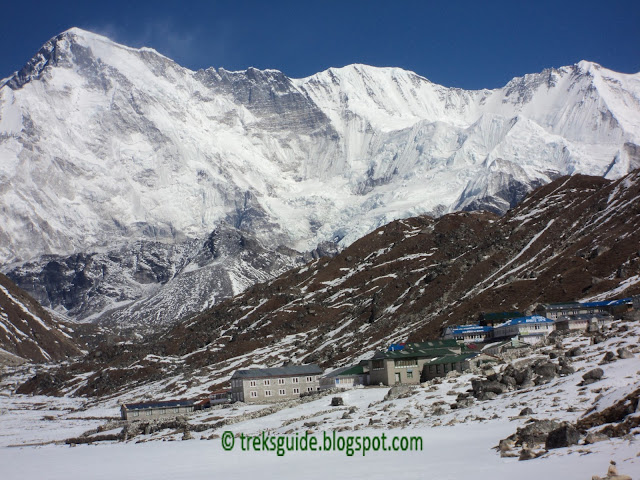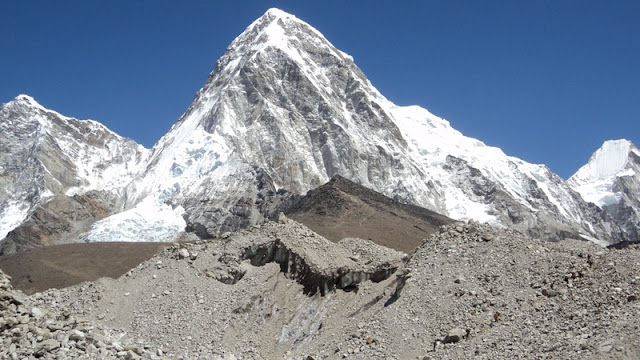Area - 147181 Sq.km.
Length – 885 km. (East to west)
Latitude – 26.22N.to 30.27 N.
Longitude - 80.4 E to 88.12 E.
Being so close to equator our snow line is 16000ft above the sea level.
Geographical facts of Nepal
- The longest and highest mountain range Himalayan is extended from Afghanistan to Bhutan. One third of the total length is in Nepal that is 800km. The highest concentration of the highest mountains.
- We have more than 1300 peak higher than 6000m. so most of them are not named and known by their group names. About 200 peak of over 6000m. are confirmed to the Khumbu Himalaya that is Everest area.
- Eight of the 10 highest mountains of this world are in Nepal.
- Between Dhaulagiri and Annapurna lies the world’s deepest gorge –Kaligandaki.
- Tilicho Lake at 5099m. Situated north of the Annapurna Himal is the highest lake in the world.
- Only 16% of the total area of Nepal is flat. 17% of the total area is covered bypermanent snow.
- Nepal has declared 14% of its total land as national parks or wildlife conservation area. The largest area of any country has protected for conservation.
- Himalaya called the “Abode of snow” or Kang ri –Snow mountain is a unique highland of our glob. Although Nepal is a very small country, altitude ranges from 70m.to 8848m. above sea level within 150km.of a horizontal distance, the greatest altitude variation on this planate –steepest country.
- If all the surface areas of Nepal were made flat and filled in a open space, the total area would be equal to the United States.
- We have the highest number of birds in the world, which is equal to whole continent of N. America or USA and Canada together that is 847 species in.
- Nepal has highest number of bio diversity. Nepal holds not more than 0.1% of the total land area of this world, but has the highest number of flora and fauna (10% of the this world)
We find in Nepal
A. More than 5160 native flowering plants,
B. 1666 types of Fungi, 687 Algae, 740 mosses and 450 Firns,
C. 1440 species of spiders,
D. 5052 species of insect,
E. 185 species of fish,
F. 43 species of amphibians,
G. 100 types of reptiles,
H. 32 species of rhododendrons.
Geographical world records of Nepal
- World’s highest peak – Mt. Everest,
- World’s deepest George – Andha Galchhi,
- Bird only in Nepal – Spin Baller,
- World’s deepest valley – Arun valley,
- World’s highest waterfall – Shoolighads,
- World’s largest Himalayan range – Himalaya,
- World’s highest pass – Lughla,
- Mushroom only in Nepal- Tryafina Nepalenside,
- Butterfly only in Nepal – Polymat Nepalensis,
- Flower in highest palce – Stellari Decumbes ,
- River from highest area – Arun River,
- World’s biggest rhododendron - Rhododendron Arborium,
- Airport in highest place - Solukhumbu, Syangboche,
- Lake in highest place – Tilicho Lake,
- National park in highest place- Sagarmatha National Park,
- Hotel in highest place – Hotel Everest View (Syangboche)










